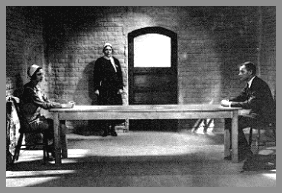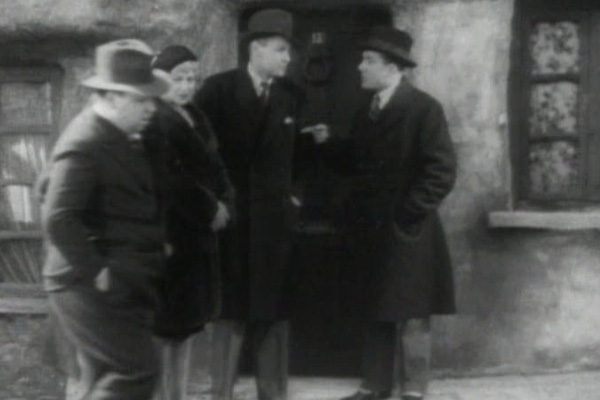I believe this is the last of my reviews of early Hitchcock films for the Monthly Film Bulletin that I’ve transcribed, after The Ring, Blackmail, and Number Seventeen; this one appeared in the July 1975 issue. –J.R.
Murder
Great Britain, 1930 Director: Alfred Hitchcock
Hitchcock has described Murder as his “first and only whodunit”, accounting for his antipathy to the form with the complaint that it “contains no emotion”, and bringing to mind Edmund Wilson’s comparison of reading several with unpacking “large crates by swallowing the excelsior in order to find at the bottom a few bent and rusty nails”. Certainly the most evident lack in this 1930 movie — apart from the creakier aspects of the play which it adapts — is the sort of emotional continuity and momentum of controlled viewpoints which sustained Blackmail so brilliantly the previous year, and the more dubious cerebral rewards offered in their place are not quite enough to fuse its comparable experiments into a consistently workable style. After an effective, rather UFA-inspired opening (prompted, no doubt, both by Hitchcock’s work at the German studio in the mid-Twenties and by the fact that he concurrently shot a German version of Murder entitled Mary), which features a lengthy dolly past the windows of neighbors responding to a mysterious commotion, the film mainly tends towards a stagier conception of dialogue units which the various stylistic departures often inflect rather than unify, thus usually registering as isolated “touches”. Hitchcock recalls asking his actors to improvise some of their lines in certain scenes; an examination of the shooting-script suggests that one instance of this method occurs in an early scene between Doucie and Miss Mitcham while the latter prepares tea – a shot nearly two minutes long and including six trips between a kitchen and an adjoining room, whose expositional function is not appreciably lightened by impromptu remarks about the brand of the tea. Similarly, Herbert Marshall’s once-celebrated voice-over soliloquy to the strains of the “Tristan” prelude seems notable today chiefly because it raises the question of why Hitchcock felt it necessary to record the orchestra live on the set when Marshall’s stentorian tones were added on a different occasion. Rather more interesting, at least historically, are an odd subjective shot (Sir John imagining a sumptuous dinner table as he prepares to spend the night in a commoner’s lodgings) and, more generally, the multiple use of theatre motifs in the mise en scène, whereby Hitchcock contrives to convert Diana’s cell and Sir John’s office into stage settings – matching the “play-within-a-play” mechanisms in which Sir John exposes Fane and the latter hangs himself. The adept backstage handling of the repertory company’s farcical production, glimpsed obliquely in counterpoint to a police investigation, ensures that our first and only glimpse of a play from the audience’s vantage point occurs in the film’s final shot, which unites hero, heroine, and the Markhams under the same proscenium. Apart from such games played against the more mechanical developments of the mystery plot, the principal sustaining thread of Murder is a conventionally arch comic treatment of class consciousness between Sir John and everyone else, which – like the long jury scene in which he first appears – is coldly amusing in places but awkwardly dated in overall conception.
JONATHAN ROSENBAUM
—Monthly Film Bulletin, July 1975 (vol. 42, no. 498)



